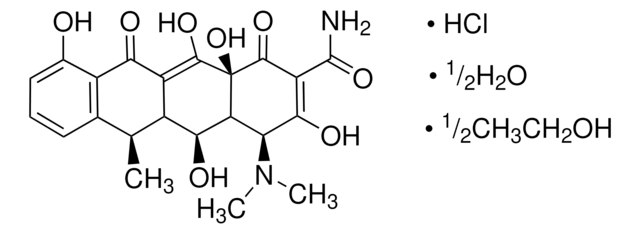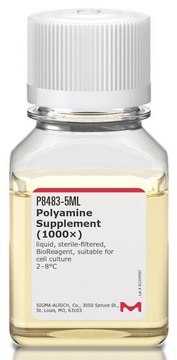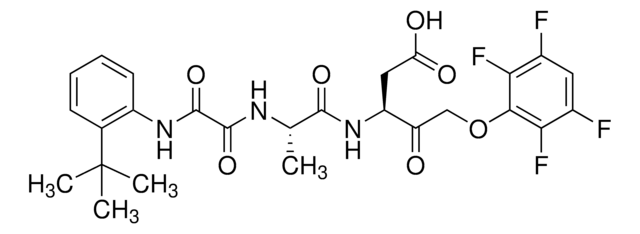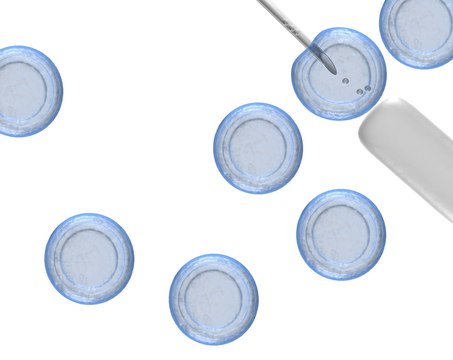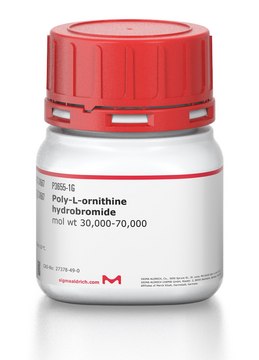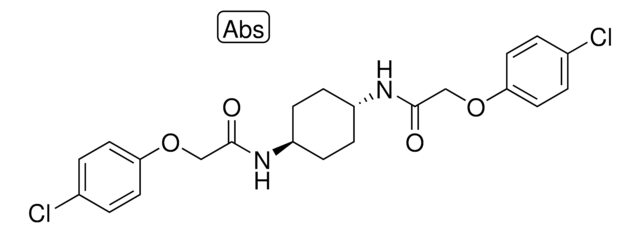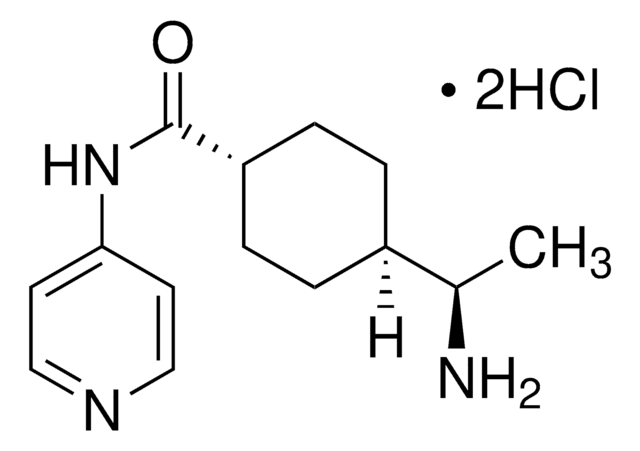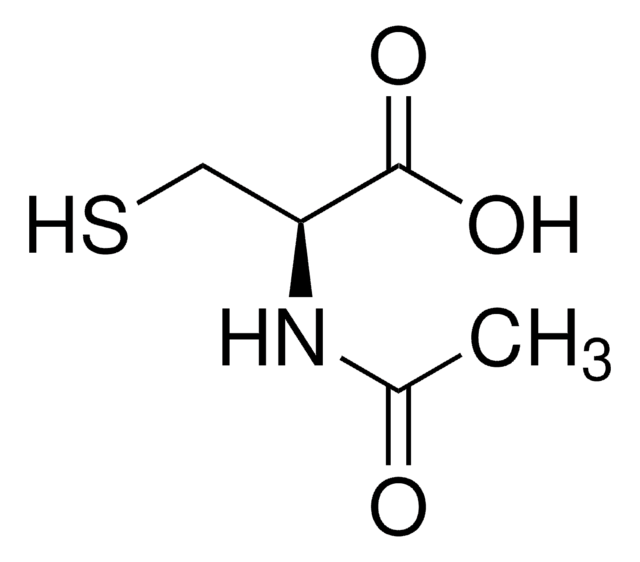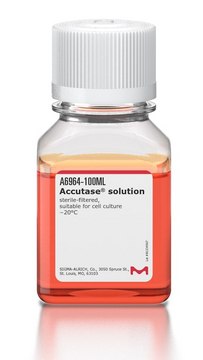SML3272
Chroman 1
≥98% (HPLC)
Synonym(s):
(3S)-N-[2-[2-(Dimethylamino)ethoxy]-4-(1H-pyrazol-4-yl)phenyl]-3,4-dihydro-6-methoxy-2H-1-benzopyran-3-carboxamide, (3S)-N-[2-[2-(Dimethylamino)ethoxy]-4-(1H-pyrazol-4-yl)phenyl]-6-methoxy-3,4-dihydro-2H-chromene-3-carboxamide, (S)-Chroman 1
About This Item
Recommended Products
Quality Level
Assay
≥98% (HPLC)
form
powder
color
white to beige
solubility
DMSO: 2 mg/mL, clear
storage temp.
2-8°C
Biochem/physiol Actions
Chroman 1 is a highly potent and ROCK2-selective Rho kinase inhibitor (ROCK1/2 IC50 = 52/1 pM) with much greater potency and selectivity than Y-27632 (ROCK1/2 IC50 = 71/46 nM). Chroman 1 is superior to Y-27632 in improving the viability of hPSCs in cultures (50 nM Chroman 1 is equivalent to 10 µM Y-27632; hESCs WA09 in E8 medium on vitronectin-coated plate). The combination of chroman 1, emricasan, polyamines (40 ng/ml putrescine, 4.5 ng/ml spermidine, and 8 ng/ml spermine), and trans-ISRIB (CEPT) is reported to enhance the survival of genetically stable hPSCs by simultaneously blocking several stress mechanisms that otherwise compromise cell structure and function.
Storage Class Code
11 - Combustible Solids
WGK
WGK 3
Flash Point(F)
Not applicable
Flash Point(C)
Not applicable
Choose from one of the most recent versions:
Certificates of Analysis (COA)
Don't see the Right Version?
If you require a particular version, you can look up a specific certificate by the Lot or Batch number.
Already Own This Product?
Find documentation for the products that you have recently purchased in the Document Library.
Our team of scientists has experience in all areas of research including Life Science, Material Science, Chemical Synthesis, Chromatography, Analytical and many others.
Contact Technical Service